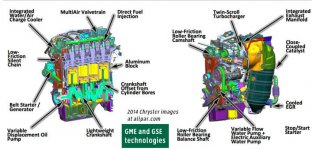Do any of you Fiat veterans know if it’s possible to download a PDF of the owner’s handbook for the new 500 Hybrid model? I’d take English or French.
Still not sure why car manufacturers treat the handbook, service schedule, and even brochures as top secret. You often need a VIN or at least a name and address to get your hands on this basic info.
I like to know about a car before buying one … maybe that’s intolerably old-fashioned?
Sorry for being grumpy.
Still not sure why car manufacturers treat the handbook, service schedule, and even brochures as top secret. You often need a VIN or at least a name and address to get your hands on this basic info.
I like to know about a car before buying one … maybe that’s intolerably old-fashioned?
Sorry for being grumpy.


